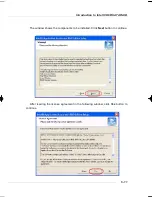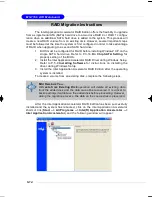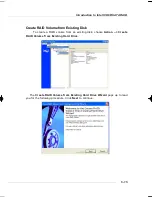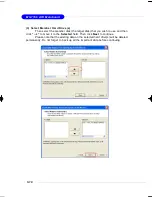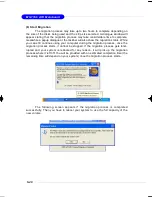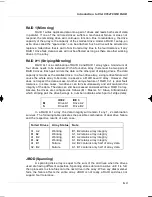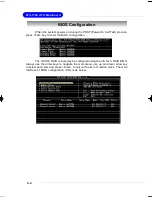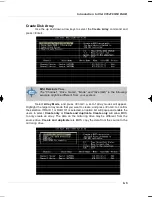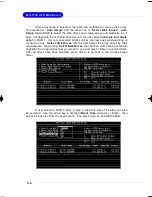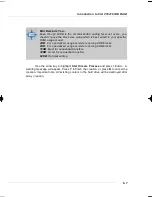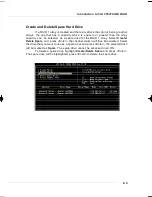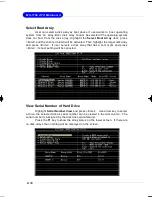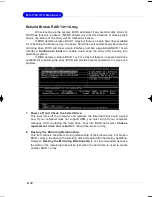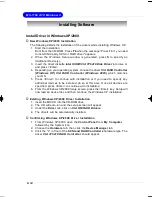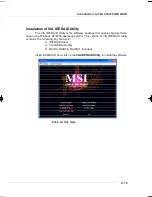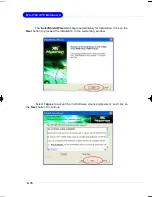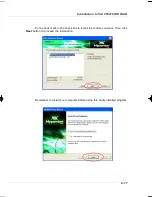
Introduction to VIA VT6410 IDE RAID
6 - 3
RAID 1 (Mirroring)
RAID 1 writes duplicate data onto a pair of drives and reads both sets of data
in parallel. If one of the mirrored drives suffers a mechanical failure or does not
respond, the remaining drive will continue to function. Due to redundancy, the drive
capacity of the array is the capacity of the smallest drive. Under a RAID 1 setup, an
extra drive called the
“
spare drive
”
. can be attached. Such a drive will be activated to
replace a failed drive that is part of a mirrored array. Due to the fault tolerance, if any
RAID 1 drive fails, data access will not be affected as long as there are other working
drives in the array.
RAID 0+1 (Striping/Mirroring)
RAID 0+1 is a combination of RAID 0 and RAID 1 array types. A minimum of
four drives needs to be installed. With a four-drive array, there must be two pairs of
RAID 0 drives. Each pair mirrors the data on the other pair of striping drives. The data
capacity is two times the smallest drive. In a four-drive array, a single drive failure will
cause the whole array to become, in essence, a RAID Level 0 array. However, this
does not impact the data access. Another unique feature of RAID 0+1 is dual fault
tolerance. In some cases, two drives can fail simultaneously and still maintain the
integrity of the data. The data can still be accessed and worked like a RAID 0 array.
Assume the drives are configured as follows (M = Master, S = Slave, A/B indicates
which striping pair the drive belongs to, number indicates which part of stripe data):
IDE 2
IDE 3
M
Drive A1
Drive A2
S
Drive B1
Drive B2
In a RAID 0+1 array, the data integrity will remain if any 1, 2 combination
survives. The following table indicates the possible combination of dual drive failure
and the respective results of each case.
Failed Drives
Array Status
Note
A1, A2
Working
B1, B2 retains array integrity
B1, B2
Working
A1, A2 retains array integrity
A1, B2
Working
B1, A2 retains array integrity
B1, A2
Working
A1, B2 retains array integrity
A1, B1
Failure
A2, B2 contains only half of array data
A2, B2
Failure
A1, B1 contains only half of array data
JBOD (Spanning)
A spanning disk array is equal to the sum of the all drives when the drives
used are having different capacities. Spanning stores data onto a drive until it is full,
then proceeds to store files onto the next drive in the array. When any disk member
fails, the failure affects the entire array. JBOD is not really a RAID and does not
support fault tolerance.



